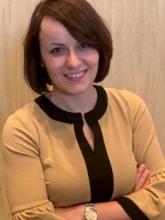AUSTIN, TEX. – Mass shootings make up only a tiny percentage of annual gun violence deaths in the United States, but they capture the attention of the nation – and of media that do not always accurately represent their context.
Experts tend to identify the first modern U.S. mass shooting event as the University of Texas Tower shooting in Austin by Charles Whitman in 1966, Corina Freitas, MD, said at the annual meeting of the American Academy of Psychiatry and the Law.
But two previous incidents preceded Whitman’s: Howard Unruh’s 12-minute killing spree in his neighborhood in Camden, N.J., in 1949, and Andrew Kehoe’s 1927 series of bombings that killed 43 people in the Bath School disaster in Michigan. Studies of these events and the hundreds since have led to a better understanding of what motivates mass shooters (or bombers in Kehoe’s case) and how to potentially identify them and prevent such events, said Dr. Freitas, of the department of psychiatry and behavioral sciences at George Washington University in Washington.
Dr. Freitas provided an overview of mass shooting history in the United States before Karen B. Rosenbaum, MD, clinical assistant professor at New York University and clinical instructor at New York Presbyterian–Weill Cornell Medical Center, spoke about the social, political, and legal implications of the intersection between mental illness and mass shootings.
She began by explaining how the FBI’s definition of mass shootings has changed from “four or more people at one location within one event” in 2005 to its redefinition in 2012-2013 to “three or more killings in a single incident and in a place of public use.”
Mass shootings usually are not impulse kills, Dr. Freitas said, noting that 77% of shooters plan their shooting for at least a week, and 46% of people spend about a week preparing. The perpetrators are potentially recognizable, typically displaying four to five concerning behaviors up to 1 year before the shooting, such as talking about their plans or purchasing supplies. But only a minority of people who observe these behaviors ever speak up about them or take any actions, she said.
, but they also display numerous other psychosocial characteristics, such as self-esteem issues, paranoia, narcissism, depression, and suicidality.
“Almost half of them are suicidal, and they actually proclaim it up to 1 year ahead of the shooting,” Dr. Freitas said. “We could catch them if we paid more attention to that.”
Mass killers tend to fall into three categories, as classified by psychiatrist Park Dietz, MD, in 1986:
- Family annihilators, such as George Banks, are typically depressed, paranoid, suicidal older males who might be intoxicated at the time of their attack. Banks shot 13 people, including 5 of his own children and 2 other children and their mothers, in Pennsylvania in 1982.
- Pseudocommandos, such as Charles Whitman, are usually preoccupied with firearms and plan heavily. “They usually end up killing themselves by cop,” Dr. Freitas said.
- Set-and-run killers, the rarest type, include perpetrators like Kehoe; their method of killing gives them an escape (though Kehoe blew himself up as well).


